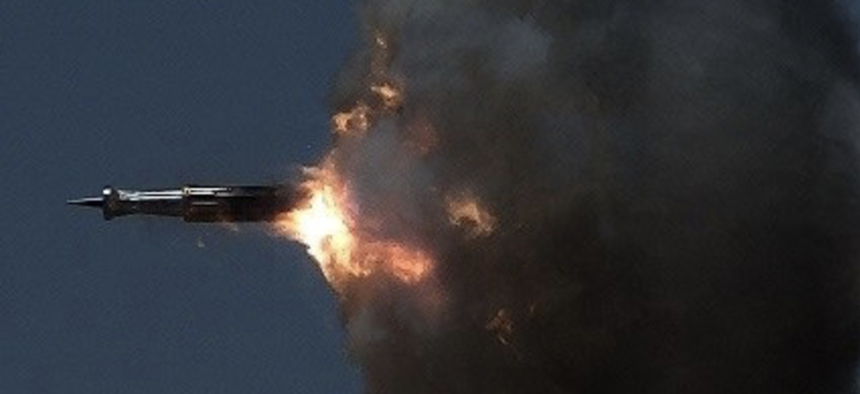
U.S. Army via BAE Systems
New Artillery Round Shoots Farther Than Some Missiles, Can Hit Moving Targets
Similar rounds, like the Excalibur, have been shipped in large numbers to Ukraine.
A new type of 155mm artillery round produced by BAE Systems hit a target over 68 miles away in a December test, the longest range ever achieved by the artillery cannon used to fire it and more than three times farther than an average 155mm shell.
The new precision-guided 155mm shell can also hit a moving target, according to a company press release. The round was test fired from a U.S. Army Extended Range Cannon Artillery, or ERCA, Howitzer Test Bed, at White Sands Missile Range in New Mexico. BAE has a contract with the Army to develop and test the new round as part of the service’s XM1155 Extended Range Artillery Projectile program.
The shell, which uses glide fins that shoot from its side to navigate to its target, can travel much farther than the 15.5-mile range of the Army’s standard 155mm shell. Another shell designed by BAE that also uses fins to navigate to its target, the Excalibur 155mm round, has a range of about 24 miles.
The new BAE round is also equipped with electronic-warfare defenses, said Jim Miller, vice president of business development for combat mission systems at BAE Systems. Russian GPS jamming has emerged as a key consideration in Ukraine.
The U.S. could use the rounds to take out long-range targets that a unit would otherwise have to use a more expensive missile on. While BAE did not state a price, Miller said it would be less than $85,000 per round. The Army’s Guided Multiple Launch Rocket System, with a range of 43.5 miles, can cost as much as $168,000 a round according to the Army’s 2023 budget.
The U.S. used the Excalibur round first in 2008 in Afghanistan. It has sent over 6,000 precision-guided rounds to Ukraine, including the Excalibur, since the start of Russia’s invasion in February 2022.
Unlike the Excalibur, the new BAE round uses a sabot configuration. Sabot rounds have the same rear diameter of a standard shell, to capture the explosive energy of the round’s propellant, but taper to a thinner warhead. The round is simpler to use than other types and less prone to error, said BAE’s Chris Laski.
BAE is still testing the round as part of the Army’s XM1155 program, which seeks to develop extended-range artillery. If testing is successful, it may become a program of record in 2025, Miller said




No comments:
Post a Comment
Note: Only a member of this blog may post a comment.